A Living Record of Twin Cities Punk: 30 Years of Extreme Noise
A conversation with the volunteer-run music store and staple of the Twin Cities punk scene on sustaining a DIY community
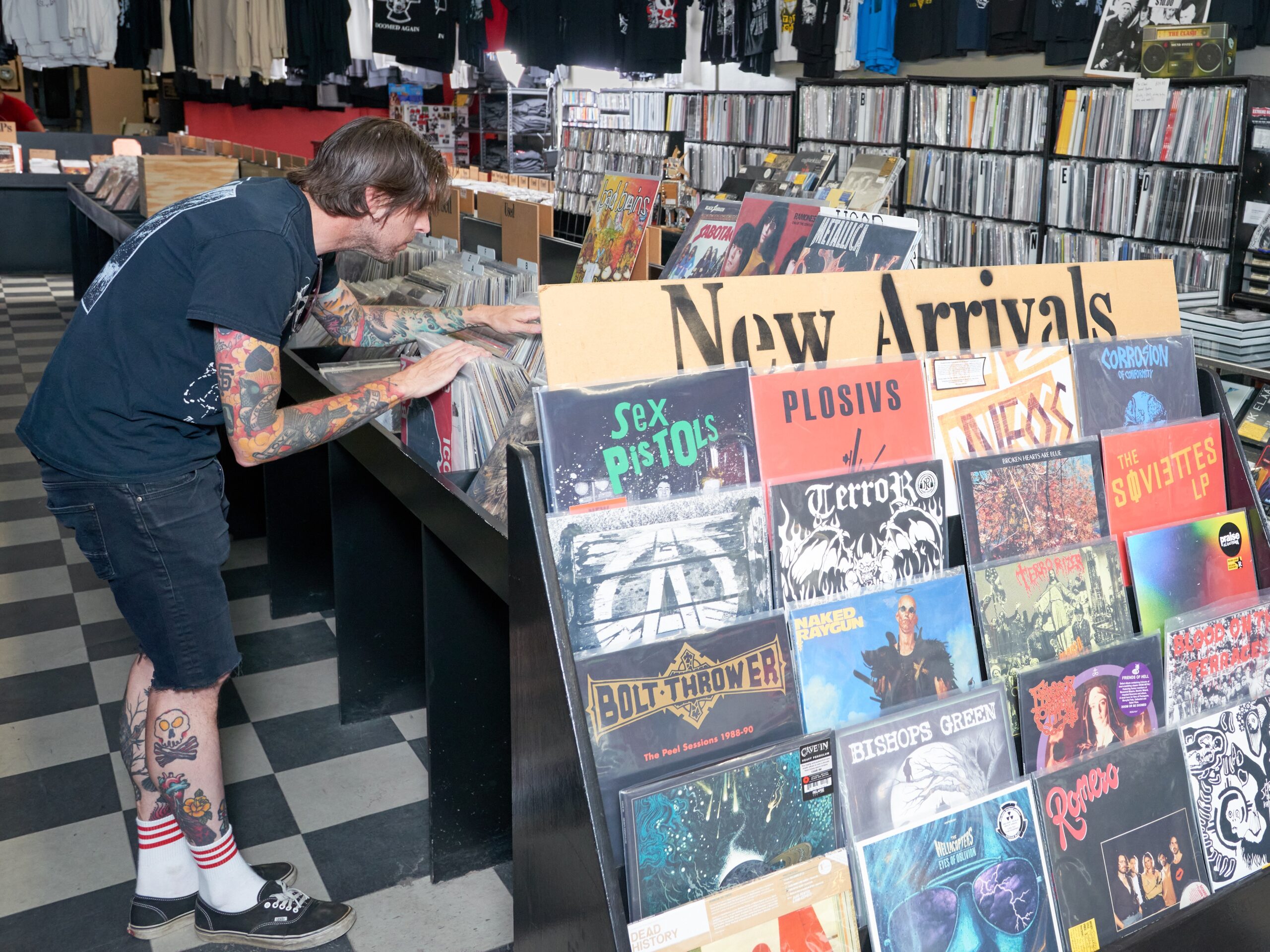
Opening its doors on April Fools’ Day, 1994, Extreme Noise Records is a volunteer-run music store that has remained a staple of the Twin Cities music and punk communities for nearly three decades. Like a variety of venues and practice spaces founded around the globe in the 20th century, Extreme Noise Records supports a community of musicians and artists who operate outside of commercial radio, television, music stores, and streaming platforms.
Reflecting on the legacy of Extreme Noise Records, a group of current collective members gathered to discuss how a record store can be an alternative art space, Extreme Noise Records’s legacy as a nexus for artistic practices, as well as the love and support found in the heart of the Twin Cities punk scene.
Jake YuznaFor those unfamiliar with your collective, what is Extreme Noise Records?
Brad StifflerIn short, we’re a collectively run record store. We are all-volunteer and all of the profits are reinvested into the store or into the larger punk community. We’ve been open since 1994, and this is our third location.
JYDo you self-identify as specifically punk, or have you moved away from that? Did you ever?
Bryan AlftI think we still do, but we definitely are broader than we used to be. There is some necessity, to keep the store open, but I also think the scene’s interest has broadened over the years. When we first opened, we didn’t carry a lot of metal. Now we carry indie rock, metal, some hip-hop, some country, and kind of a little bit of everything.
Ian FishmanEvery now and then you find something a little bit different in the used bin. Recently, I found a jug band album in there.
Will HenkeWe’re also the only store in town that carries smaller DIY punk hardcore records.
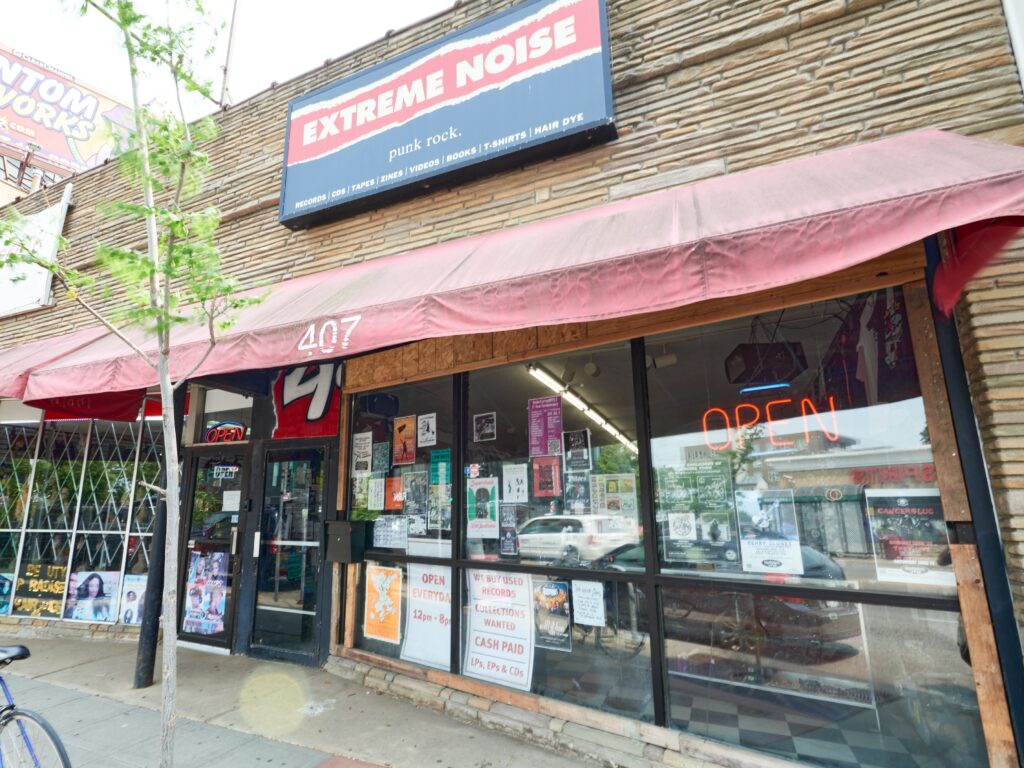
JYHow did everyone come to Extreme Noise Records?
Mark NelsonI think I was the first volunteer to come in after Extreme Noise Records started. This was before cell phones, the internet, and all that. When the store opened, I came in and Felix was like, “You know a lot about music. You like a lot of different things. You should pick up a day or two over here.” And I’m like, “Sure. That sounds great.” I got my work schedule set and started coming in two days at the first location, probably about three months after we opened.
BAAnd you’re still doing it.
MNYeah. Over 28 years later, still here.
BAFor me, I was doing a little ordering for the store, and after it moved the second time I helped remodel the new space. Doing all the physical stuff with the remodeling drew me in and I got more engaged. That was 26 years ago.
BSI started in 2004. I moved to the Twin Cities to go to college and just really wanted to volunteer at Extreme Noise Records. I pestered Mark until he let me work with him on Thursday afternoons. That was around 2004.
WHI grew up coming here and must have started volunteering around 2005.
Leanna SweetlandBefore I moved here in 2000 from Illinois, I owned my own store. I really like being around records, so I started volunteering around 2008. It is really therapeutic for me to be around records and people who like records. I like being in the know of what’s going on, new releases and all that. I’ve been involved off and on since then, but now that my kids are grown, I’m trying to become more involved.
IFExtreme Noise Records was actually one of the reasons why I wanted to move to Minneapolis. I’d come to town from New York when I was on tour in a band. My wife and I were looking for a good place with a good art scene and a good punk scene. When we found Extreme Noise, we were like, “Well, we should probably look a bit deeper at Minneapolis.” Then in 2018, I had my Monday nights free, and I wanted to do something with those Monday nights. Two to three weeks later I started volunteering here.
Sarah MaximowiczI also have a recent experience. I came to town from New York just over a year ago and started volunteering, mostly because the people I moved to town to be with were really into punk. The whole local punk community has been really wonderful and welcoming.
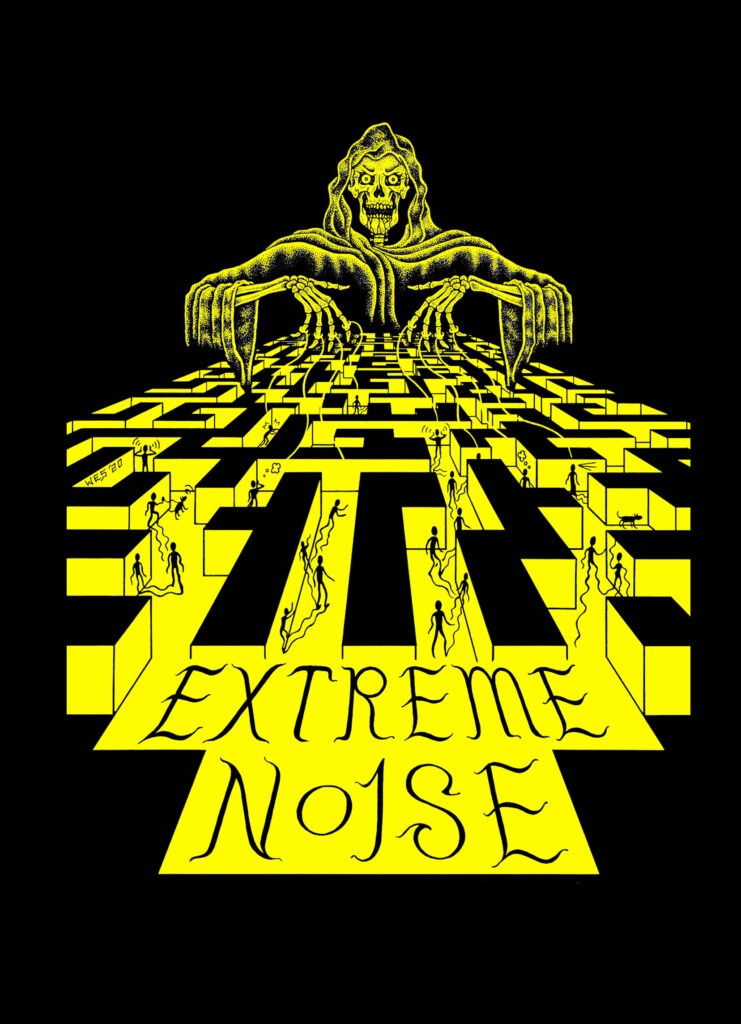
Wes Samples. Image courtesy Extreme Noise. 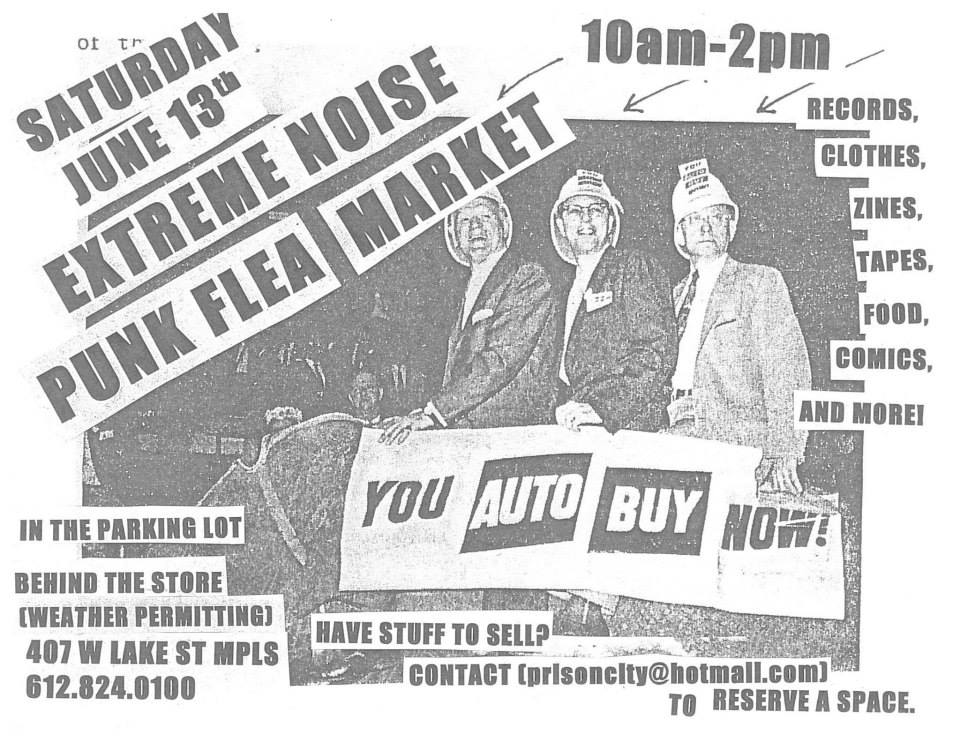
Brad Stiffler. Image courtesy Extreme Noise. 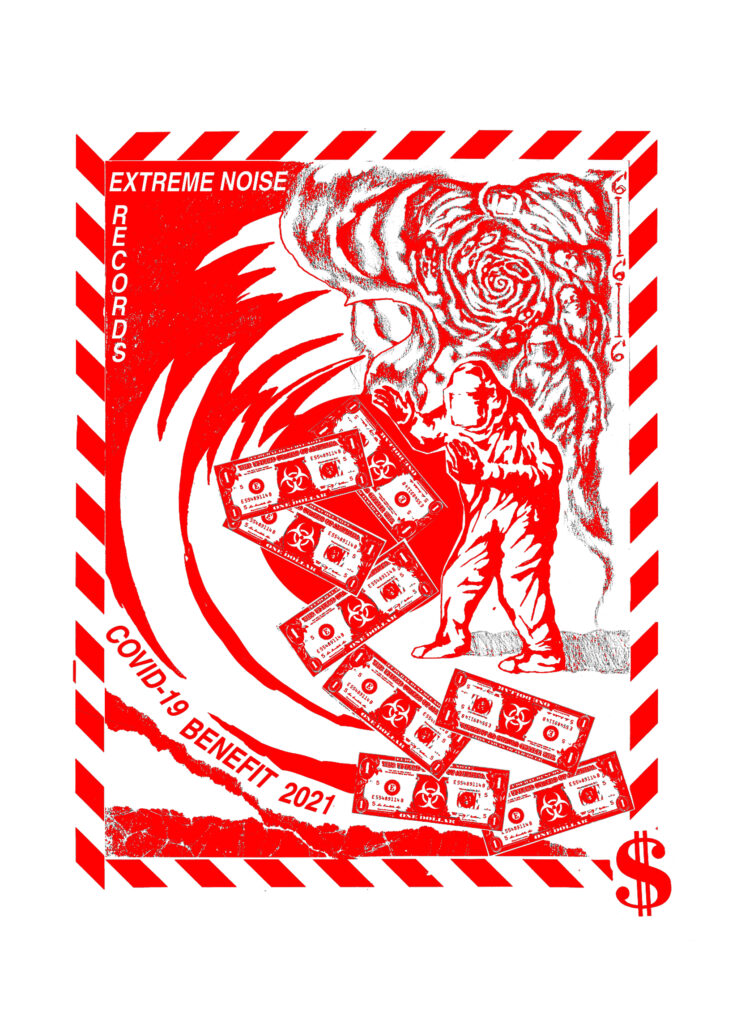
Joe Boyd-Brent. Image courtesy Extreme Noise.
JYHow did Extreme Noise start?
BADan from Profane Existence brought up the idea. At the time there were a lot of little kinds of sects in the local punk scene, and Extreme Noise brought them all together. The crustier punks, more straight-edge kids, and pop punk kids all got together and decided to do a store. They were largely influenced by Reconstruction Records in New York, which didn’t last real long but was one of the first big attempts at doing this kind of thing. The other store was Epicenter in San Francisco, which lasted a lot longer even though it closed back in the 90s.
MNThey were originally trying to put together a venue for all-ages shows, but they figured there’d be too many legal hassles and liabilities involved in that. In end they just said, “How about a record store?” The original batch of about 12 or so people each put in around $500 to $1000, bought records, and rented a space. The store got a lot of ad donations to start and grew from there.
BSI’ve seen the sheet of the original 13 or so people who put in their own money or donated stock. All those people have been paid back. Nobody owns any part of the store anymore because they’ve all been paid back.
JYHow many people are involved or volunteer now?
BSIt’s somewhere between 20 and 30 people.
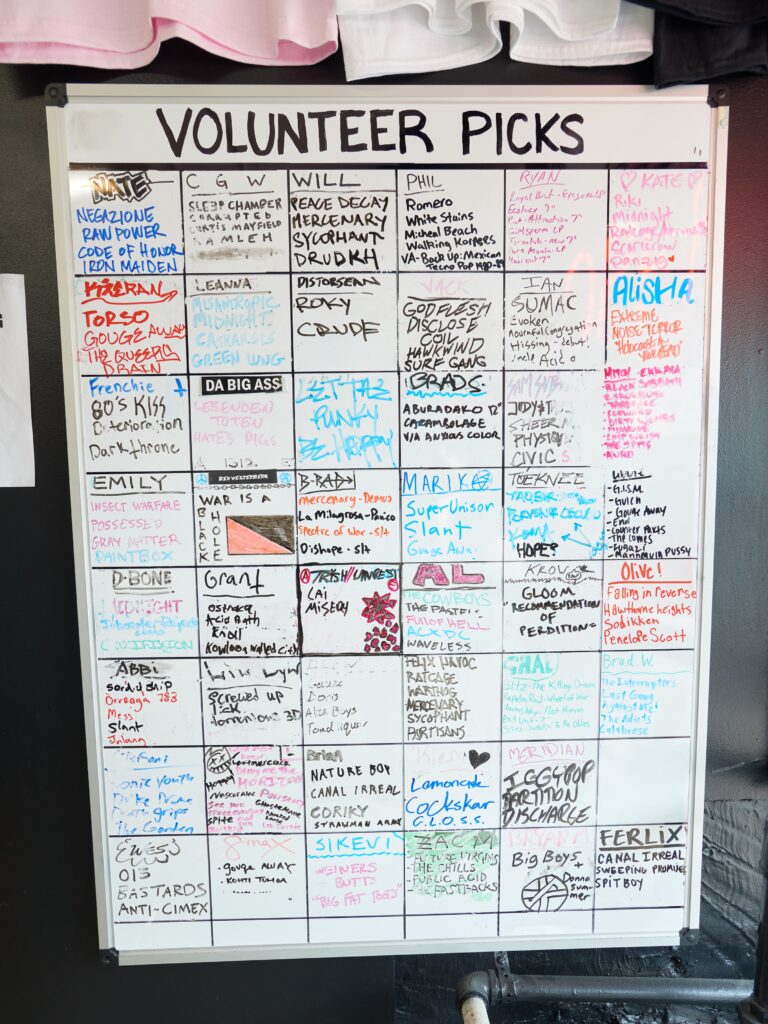
JYWhat is your structure?
BSWe have bylaws which outline that we are run by our volunteer members. A person gains voting rights as a member of the collective after six months, and then decisions are made based on that structure, all collectively. There is also a board, but the board has no role in decision-making unless the store is going to close. The board consists of five people who have two-year terms, but if you’re on the board, the only thing you do is agree that you will be around in the event that something goes wrong and you are needed. Technically, I am the president of Extreme Noise Records, but that’s just because you need a president on your tax paperwork.
Our bylaws are unique and say that no one is paid. Instead, all profits are reinvested into the store, and we are run by this collective decision-making process. We have more of a democratic volunteer member structure than a collective decision-making consensus model. Extreme Noise still operates on an old system in which you have to physically show up to a meeting in order to vote. The majority of decisions get made by a smaller group of volunteers that fluctuates between five and 15 people. The ordering of records and other items we carry is done by multiple people who express an interest in doing it. Any volunteer can come to a meeting with a project and say, “I want to do this.” Collectively, we decide on whether to do that on behalf of the store.
JYWho makes up the community and customers who frequent the store?
BAOur customer base is pretty broad now. When we first started, coming into the store was probably more intimidating for a lot of people who weren’t part of the punk scene. Today, you see everyday people in here. Some people probably think it’s all mohawks and scary people, but that isn’t the case. We sell a lot of music-themed books, zines, shirts, hair dye, spikes, studs, belts, cassettes, CDs, as well as new and used records.
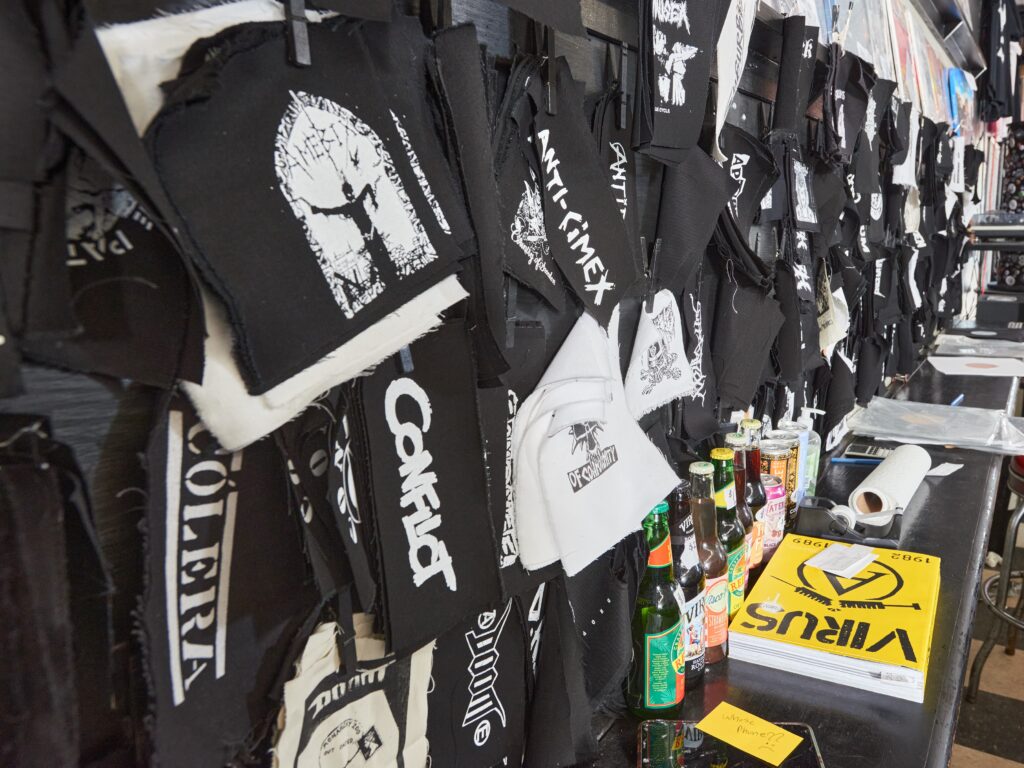
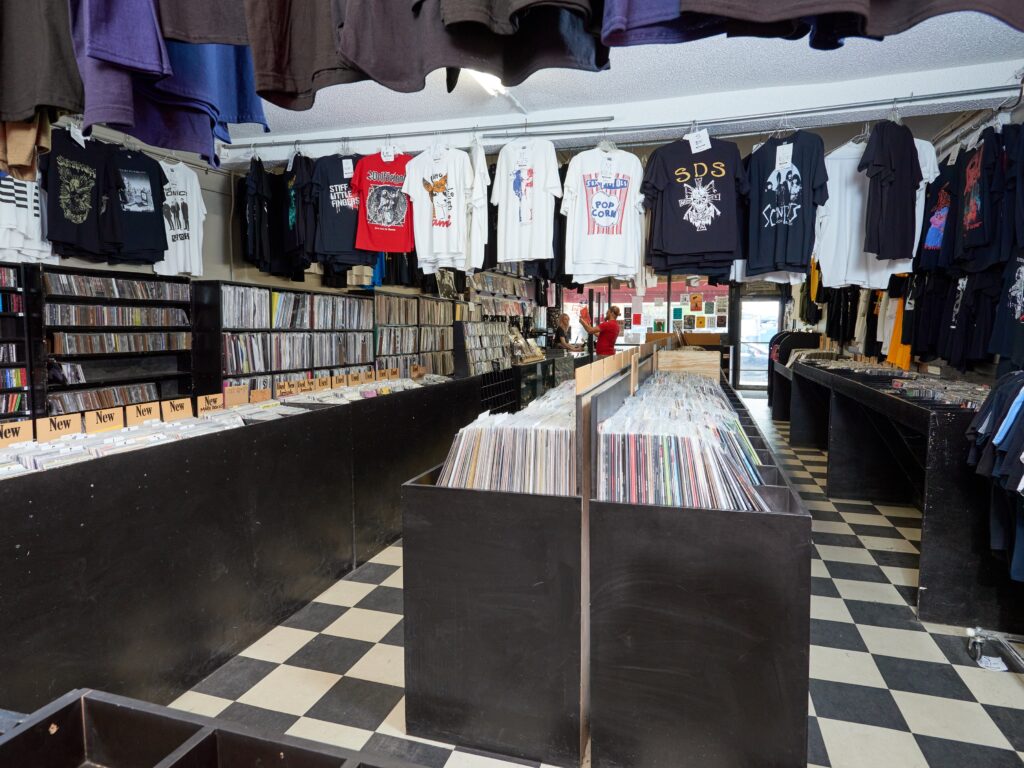
LSWe distilled what we carry down into the best of the best of every punk and metal genre, as well as other music that is related to it.
WHThe store is a spot that a lot of people stop at when they’re coming through town. We have a lot of people coming in week after week, but we also get a out-of-towners coming in and buying a bunch of stuff at once.
IFWhat we have in the store changes a fair amount, too. If you’re looking for punk classics, you’re going to find those here, but there’s also things like a Mexican post-punk band from 1984 that I would’ve never come across otherwise. We carry a lot of international stuff and different genres that fall under the punk umbrella. You’re almost guaranteed to find something here that you wouldn’t have bought otherwise.
LSMinneapolis has been known to be one of the crust-punk capitals of the world. You will find current Minneapolis punk sound as well as older stuff, like the Replacements.

JYWhy do you think the Twin Cities has such a strong punk history?
LSBecause nobody comes here, and we have to build it ourselves.
BAWe’re in a location that draws from the Dakotas, Iowa, Wisconsin, and rural Minnesota. Kids move here and it becomes a weird little Midwest hub for music and creativity.
WHBuilding off that, I credit a lot of the senior people in the scene. Without them, we wouldn’t have Extreme Noise Records. A physical space like the store is important for the scene—a place where people can come together, where you can post flyers and find out about shows. It allows kids who are into punk to know there is a community out there.
BSHouse shows move from place to place all the time, and most are not open during the day. But a store is here all the time. It acts as a nexus for everything that is happening in the scene and is less shifting or ephemeral.
JYThat connects to the next questions I have, which is: what is the unique role of a store in passing on knowledge between people and generations?
BAThings have changed because of the internet. Most of us are older, so coming to a store was the only way to discover so much of what was going on in music. You were lucky to find some records by certain bands anywhere, in places like Extreme Noise Records. Now, people come into the store more informed than they used to be, but I still think it’s a good place to meet people, learn about bands, form connections, and become part of the community. Although I still find records here that I wouldn’t have found anywhere else or have never heard about before.
WHWhen you’re actually talking with people and physically going through the stacks of records, you engage with music in a different way than being on the internet. You’ll find stuff that’s outside of where you would just naturally go in your internet searches. It’s easier to get exposed to different stuff.
BAIt’s a lot easier to connect to a physical record than clicking on Spotify, where I’m not paying as much attention.
IFOne of the nice things about volunteering is working with other people who have tastes that are different than yours. For me, that was one of the things I really enjoyed when I started volunteering because I didn’t have very many friends in the punk scene in town. Trading recommendations back and forth, sharing ideas—it builds binds between people.
LSOur customers do that, too. They are really knowledgeable. I have customers recommend stuff to me that I check out and discover really bizarre and cool music.
SMThere is no gatekeeping. Everyone has been so open to hearing what you like music-wise and giving an honest recommendation without turning you down. “Oh, that’s something you’re into? Let’s figure more out.” Or they will invite you to a show. It’s really welcoming here.
BSThe store also allows for people to be regulars, to come in and just hang out. It’s a little bit easier to stay involved in the scene, whereas in other cities it’s easier to drop out once you hit your 30s and have a regular job or something like that. Even when I was younger, I noticed that in Minneapolis, compared to Seattle and Vancouver, I met way more people who were 10, 15 years older than me who were involved in the scene here, and that wasn’t the case in other places.
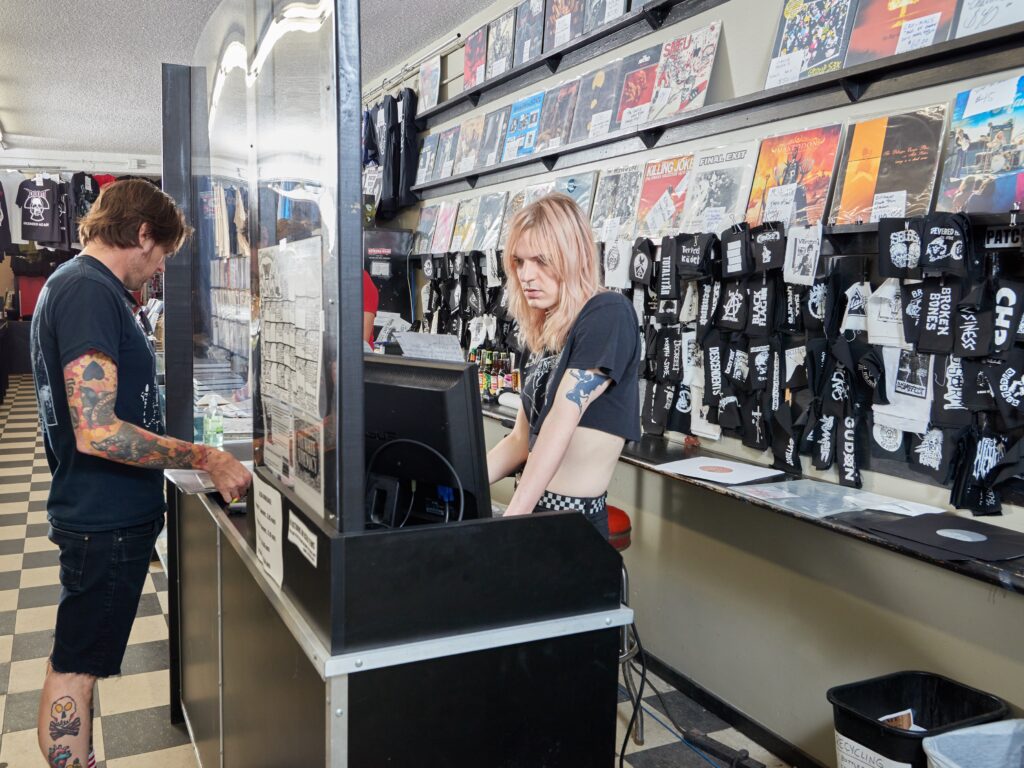
Photo: Matthew Jenkins. Courtesy Walker Art Center, Minneapolis. 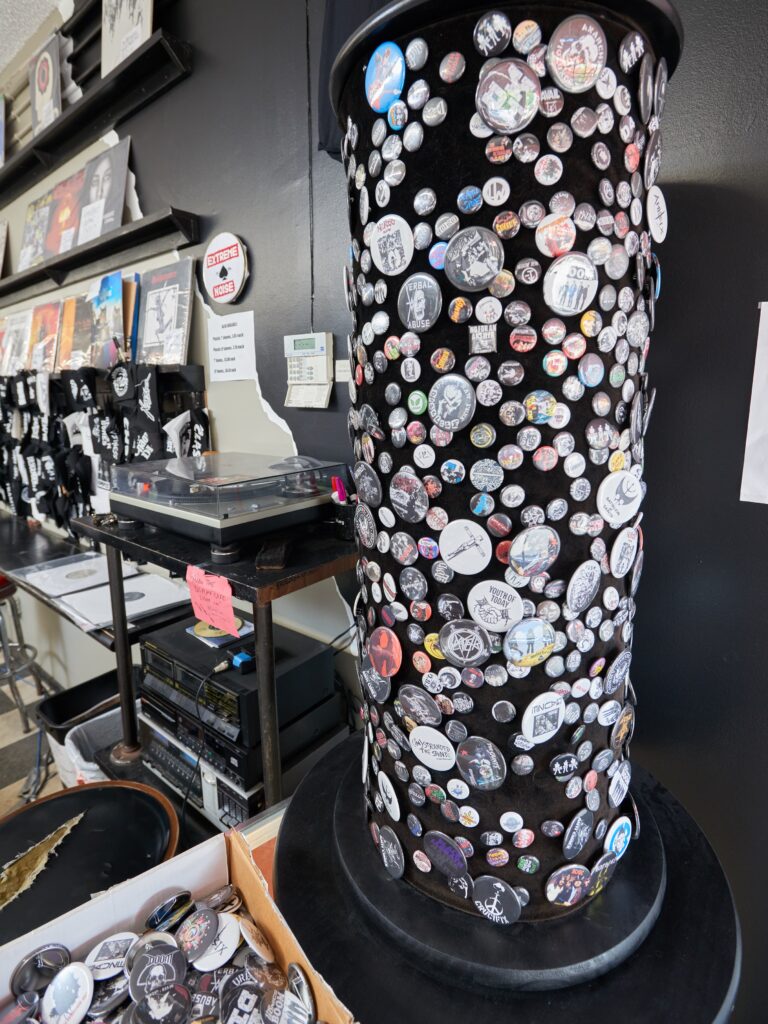
Photo: Matthew Jenkins. Courtesy Walker Art Center, Minneapolis. 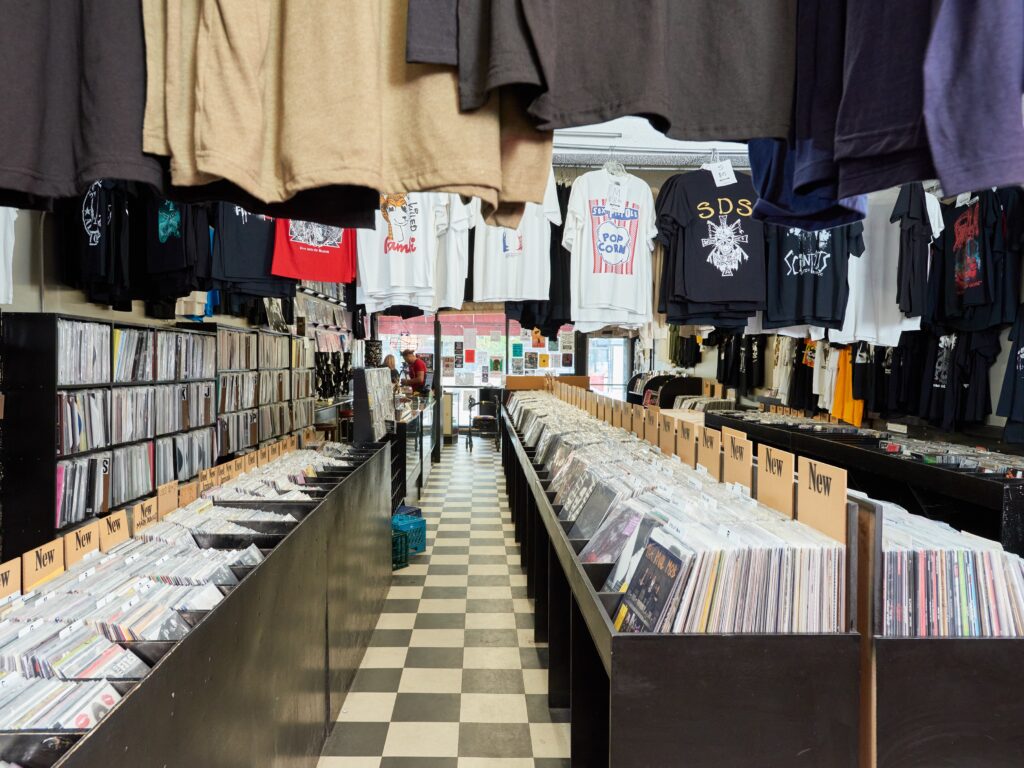
Photo: Matthew Jenkins. Courtesy Walker Art Center, Minneapolis. 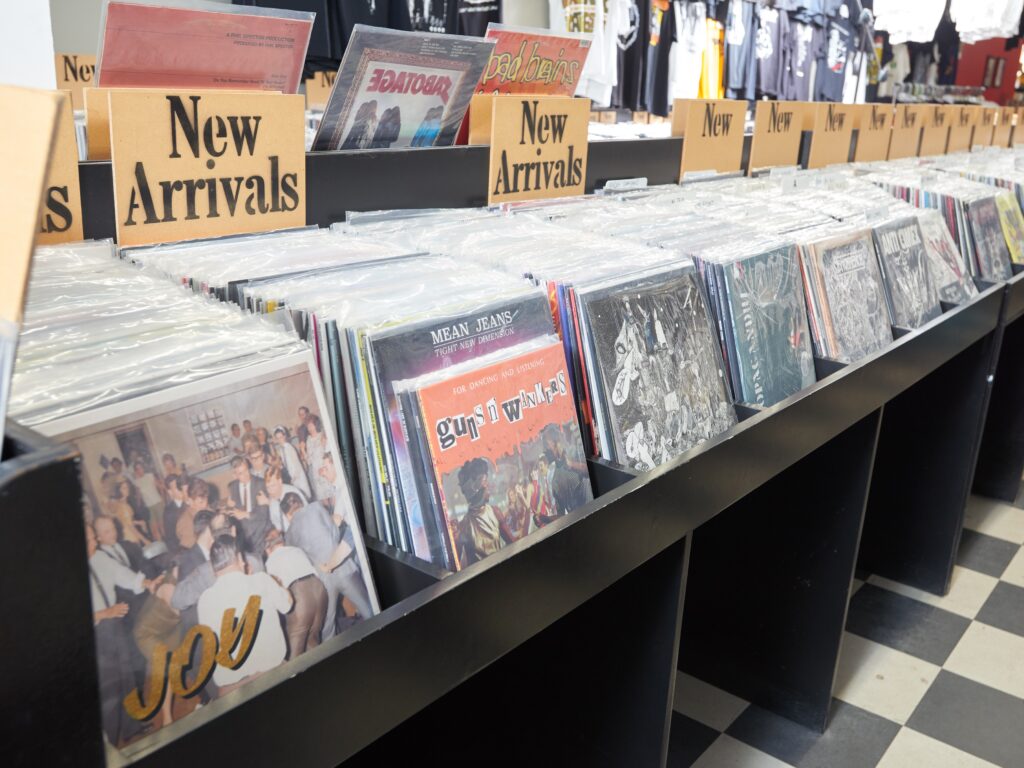
Photo: Matthew Jenkins. Courtesy Walker Art Center, Minneapolis.
JYYou seem to be touching on the benefit of having people from different ages all intermixing in a scene. Could you elaborate more on that?
LSA lot of this stuff is made for the younger generation. They’re the ones out with the new bands, new sounds, and the energy to do the things you need to do when you’re in a band. I like picking their brains and learning from their perspectives, too. It is a great exchange both ways.
WHI second that, because the older people in the scene know about all those weird and maybe less known stuff from back in the day. When you’re younger and starting to learn new stuff about the scene, it is really helpful to know the new and the old. You should know where what you’re into came from in order to really know where it’s going.
BAIt is a weird balance the store has with the older, more cynical people who have seen all the weird hassles we’ve had over the years and the younger people who are maybe a little more excited and have a little more energy. We kind of balance each other out a little bit.
JYWhat about this music and scene draw you in? What is it about this music and scene that keeps you volunteering for decades, or moving to Minneapolis to be a part of it?
WHPeople who want this type of music are a weird, small, underground community. It’s people who are super driven to make this type of music.
LSThe DIY part of the music in that people write and produce it themselves. The labels that might put out these bands are not driven to end up on the radio. That’s not the purpose of being in these bands. It’s about being part of a community and having your own music and your own style. Trying to be autonomous within our society.
IFThere’s something really freeing about being able to make your own islands with your own rules.
BADiscovering punk helped me figure out who I was and became a core of my identity. It helped me decide what to do in college, what kind of business I wanted to start, the zine I was going to make, and my politics. It was the beginning of most of my life. A lot of the punk ethics just become part of your core.
WHTo have popularity on a certain level, you have to sand the rough edges off and make it something that will be palatable to enough people. This type of punk is when you don’t worry about that, and you make the stuff you want.
MNGrowing up, I was always looking for something a little more out there, a little more extreme. That got me into early punk and metal. It is full of an energy and power that keeps sucking me into it.
BAIf we were still as uptight and restrictive as we were in 1994, I don’t think we’d still be open. We’ve had to broaden the kind of music we sell and be a little more open-minded than maybe things were back in the 90s punk scene.
IFThere is a line to be drawn between commerce for the sake of commerce and commerce with intent. Correct me if I’m wrong [looks to the group], but everything we do here is intentional. It’s not like we’re here to make a ton of money. We’re here to keep this place going. [The group nods and makes verbal agreements.]
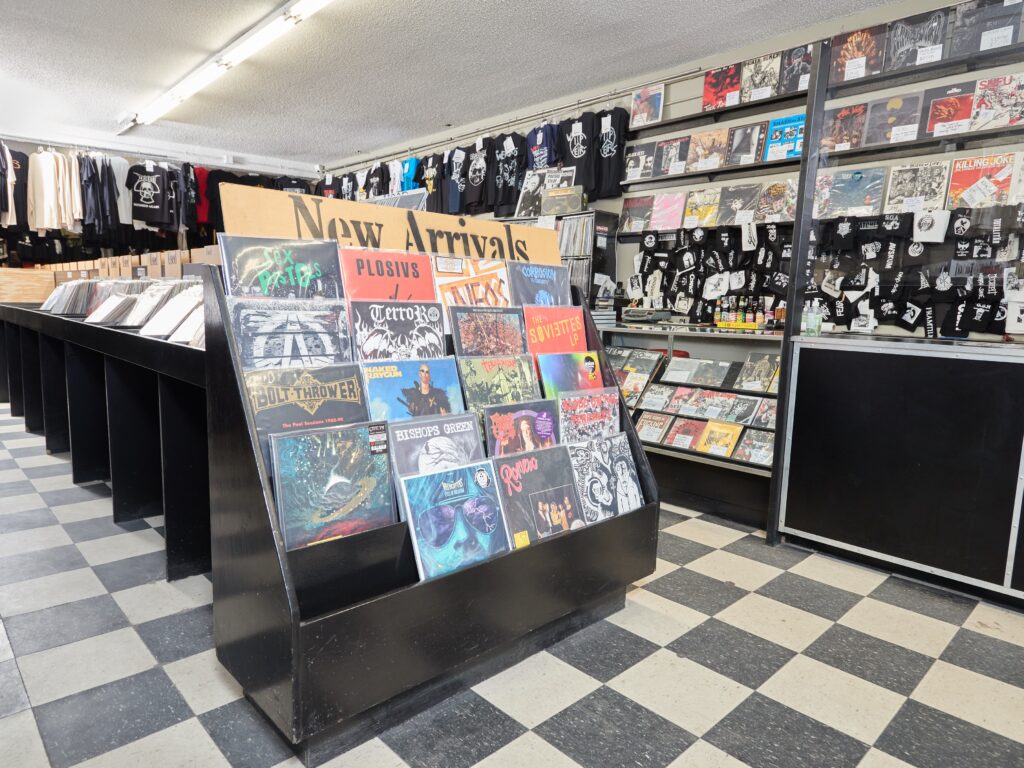
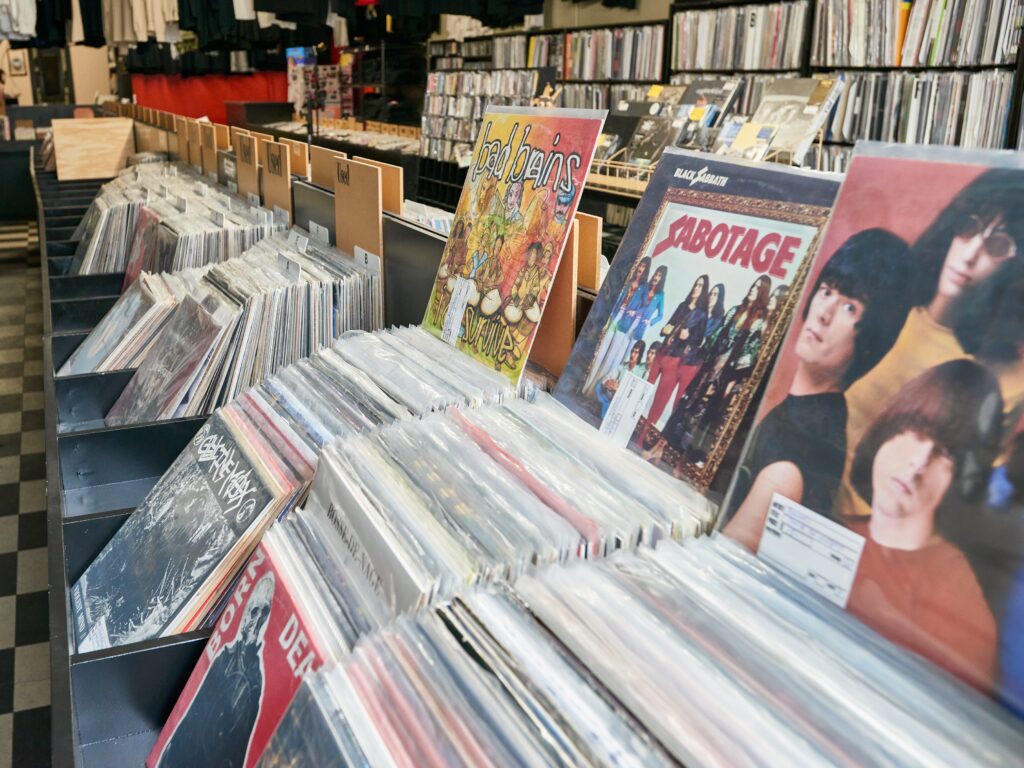
JYWhat has kept Extreme Noise Records going for all these years?
BAWhat else do we got? [Laughs.] I’m pushing 50, and this weird punk scene, which most people are over and done with in high school, still feels like my community. Most of my good friends came out of this record store, and I met my wife through the punk scene.
LSI think if you don’t fall out by a certain age, you’re just kind of there.
BAYeah.
BSIt is a way, though, to stay involved and keep current. It becomes part of your routine check-ins with friends and the community. It is a small enough chunk of your time to be reasonable when you’re doing other stuff, but still feels like you’re actually participating. Maybe you just show up for your shift and sell records. Maybe you’re ordering, maybe you’re coming to meetings, making decisions, maybe you’re doing accounting. There’s lots of different levels of involvement, and we’ve always had enough people to keep the store afloat without necessarily overloading everybody in a way that would be totally unsustainable.
LSI think the longevity of Extreme Noise might come from the fact that vinyl records have always been the core thing we sell. At one point in the 90s, nobody was buying vinyl records except for punks. Now vinyl is back and is everywhere, but for a while the only people who were pressing vinyl records were punks. The longevity, I think, has a lot to do with that medium—just having the vinyl.
JYWhy do you think punks were the only ones pressing records?
WHI think that it is a sonic thing. When you’re playing more raw, distorted music, it loses more in a digital format. It’s strengthened by the analog format: vinyl is a higher fidelity medium than tapes. It’s just a natural thing, when you have a punk band that you’re proud of and you think it’s good enough, to want to put it on record.
Vinyl also provides a bigger canvas for art and packaging. That is really important because many bands really think through their whole aesthetic, from the music to the covers and everything. They are all producing that themselves.
IFThat hits hard for me, because thinking about when I first started getting into punk, I remember getting my hands on the first Dead Kennedys album, and how having a physical record is so chock-full of information and art. You absorb so much more from having this physical thing. Vinyl can include a poster you can put on your wall, or you might get a zine that you don’t get with a CD or a cassette.
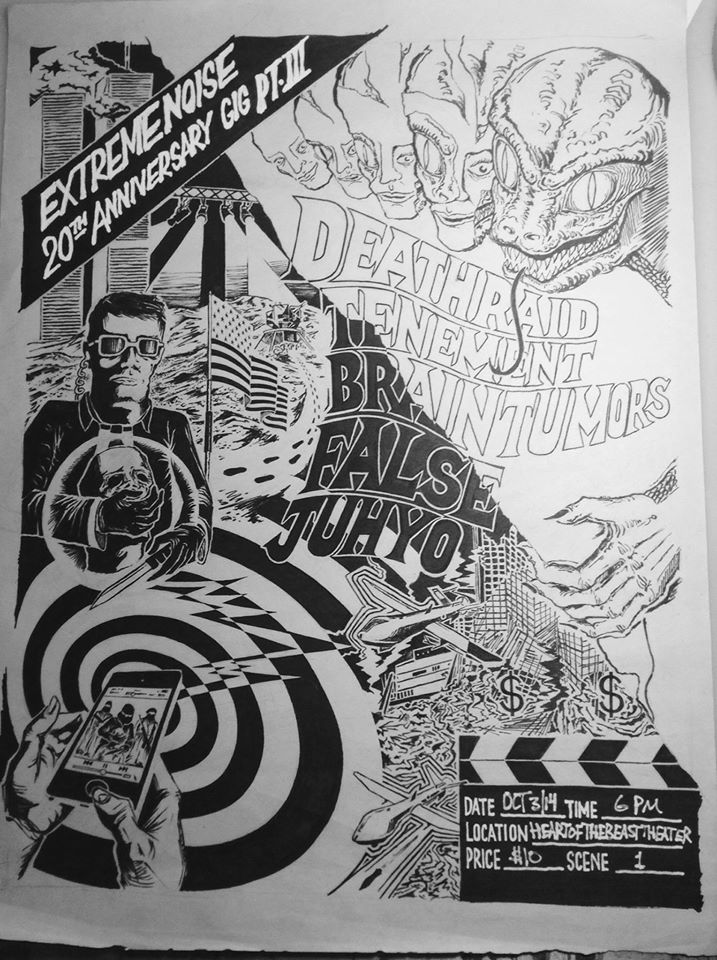
Joe Boyd-Brent. Image courtesy Extreme Noise. 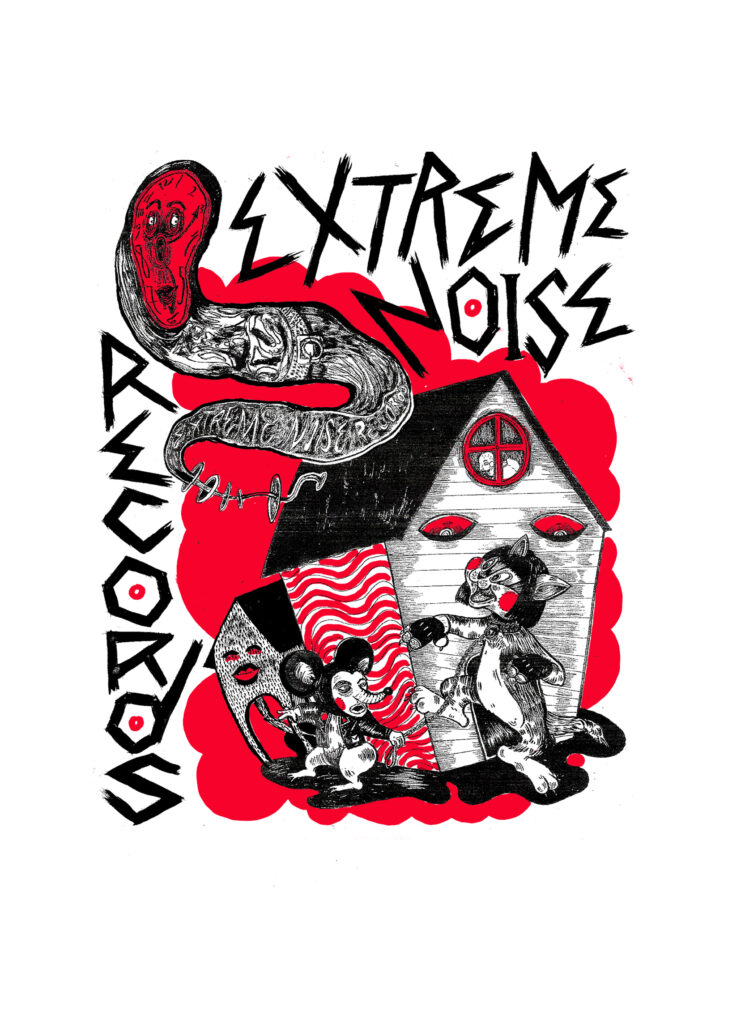
Sarah Sequoia. Image courtesy Extreme Noise. 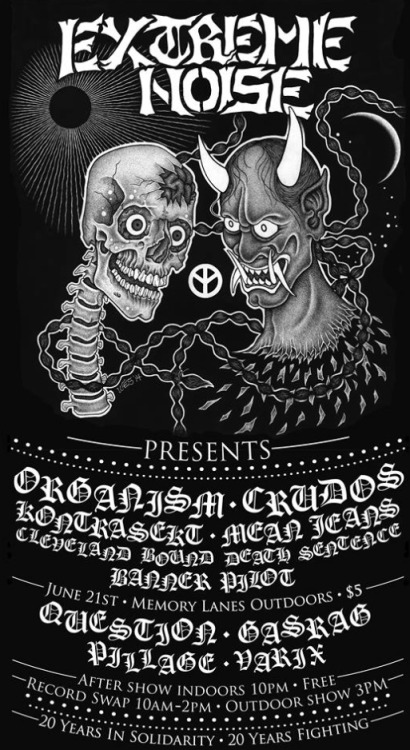
Wes Samples. Image courtesy Extreme Noise.
LSBands can come together and put splits out that allow them to share the cost of a release. Seven-inches are really big in the punk community, where you can put out two songs—one of your own band’s songs along with a song from your buddies’ band. You can do it relatively cheaply and give everybody a product. Extreme Noise has always been a place that will carry that seven-inch.
BSIt’s also part of a long-term skill-sharing: people give out connections to pressing plants and learn the process from other people you have met through the store. The store is not only a place that distributes the records and other items bands are making; but it is a place where people can connect to share information about how to actually make these things.
JSWhat kind of advice or recommendations do you have for readers who might want to start their own collective or store?
IFFind your people. Every time I look to start something new, that is how it begins. Whether it’s music, visual art, comedy, or anything that’s under the umbrella of art, you’ve got to find your people first and then start building ideas. Things just become a lot clearer once it’s not just you.
BSThis is cliché punk advice, but—it’s easy, it’s cheap, go and do it. You can do stuff like this. There’s not some magic luck or alchemy that created Extreme Noise Records. It’s just people who are willing to do it. If you go out and do it, you can make something like Extreme Noise Records happen. It’s not far-fetched. It only took 10 to 15 people coming together to start a store that’s been around for almost 30 years now. It doesn’t have to be perfect. Sometimes we are fucking half-assing it and do shit wrong. It doesn’t even have to be well planned, but just do it. Do it yourself.
JYHow do you describe or define DIY?
MNIt’s doing something on your own to your standards and not somebody else’s. Doing it for your approval and not the record label or the booking agent or whoever else. Have your band sound how you want, have your art look how you want. Somebody trying to make their own thing, instead of trying to make art that looks like Warhol because he sold a lot, or trying to have their band sound like Green Day because they’re selling millions of records.
WHYou end up creating a lot of things by approaching things DIY. If you want to do things to your own standards and in your own way, then you can’t rely on anybody else to give you the space to do it. You have to make that space, too. That is how a lot of places and spaces get made.
LSYou have to rely on other people, and that builds community. All of these individuals doing things DIY to their own standards, within a DIY community, feed off one another, and that strengthens the whole.
IFIt’s not just some slogan or term that companies like Home Depot and Urban Outfitters can slap on their advertisements and products. DIY means something specific to a way of approaching things that is outside of companies and other gatekeepers.
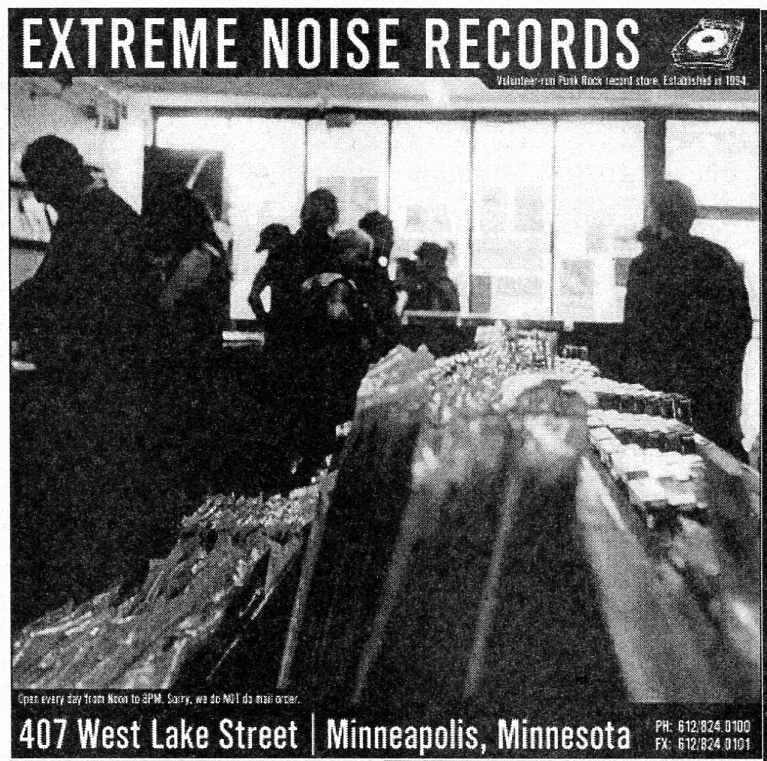
JYHow else does the store connect with the community in ways other than commerce?
LSExtreme Noise has supported a number of other groups and organizations, like the Sound Unseen film festival, Southside Food Share, Phillips Community Free Store, by giving them money. And we’ve put on shows at different venues in town to support out-of-town bands. We help print and distribute the monthly punk calendar. We take the commerce part, and we try to give it to other places.
SMWe also recommend harm-reduction services. I know people have come here in crisis before, and we’ve been able to find them help.
WHThere is definitely that aspect when you’re volunteering here. People will walk through the doors because it seems like a nonthreatening space. I’ve worked a shift where some teenage kid on acid sat up front and drank water the whole time because he didn’t know of anywhere else to go. When he came in freaked out, we were able to say, “Hey, you’re fine. Have a chair, we’ll get you some water, and just hang out until you’re in a better place.”
IFLike a lot of punk, if you don’t know about the scene, it can look kind of scary. When you come into Extreme Noise Records, it’s actually really welcoming. The whole scene is pretty darn welcoming and does a very good job of taking care of volunteers and customers and taking care of itself, which is really, really lovely.
Extreme Noise Records recommends:
Extreme Noise Records will present a talk as part of the Insights Design Lecture Series at the Walker Art Center on April 4, 2023. >> more information